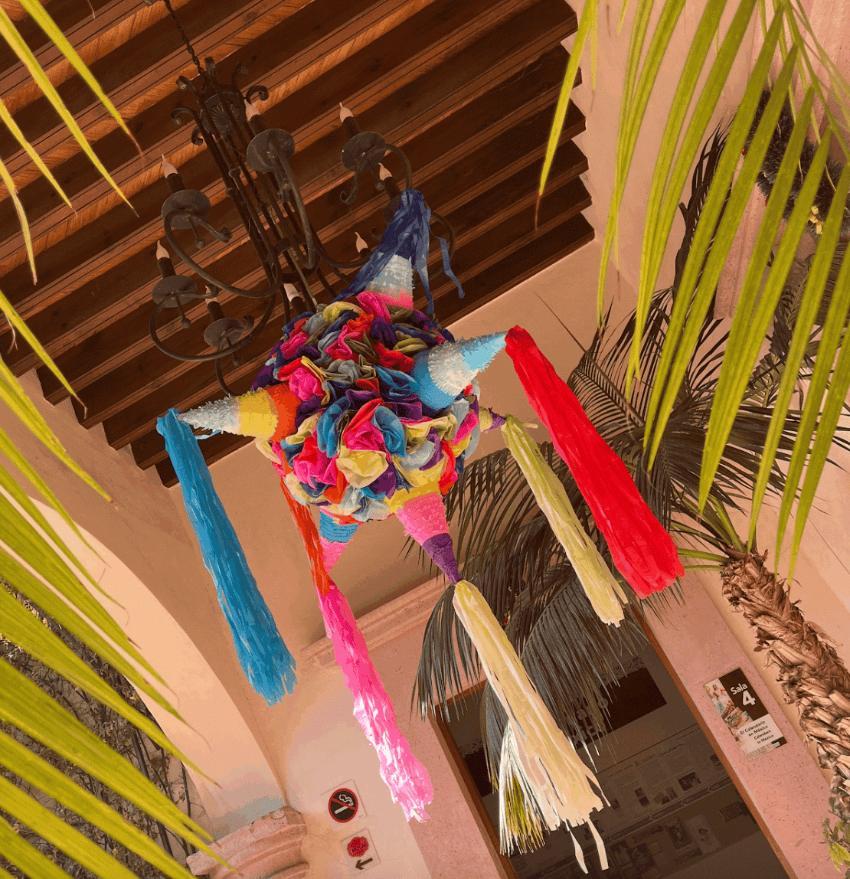It’s posada season! If you live in Mexico or in regions where Mexican culture prevails, you might feel a sense of…well…anticipation? Excitement? Anxiety? It seems that where there is one, there are dozens, and what was once a traditional Catholic commemoration of Mary and Joseph’s journey from Nazareth to Bethlehem has transformed, for many, into a boozy holiday party.
Posada means “inn” or “shelter.” In its purest form, it is a religious event that begins on December 16th, the day Mary and Joseph left Nazareth in search of a place to deliver baby Jesus. For nine nights, the pair journeyed across difficult terrain until reaching Bethlehem, where Mary gave birth on December 24th, known in Mexico as Nochebuena.
As a religious event, it begins in church where parishioners recite the Holy Rosary. It then continues into the local neighborhood in the form of a procession. Some processions are simple, with volunteers carrying a manger scene, while others are elaborate, theatrical reproductions of the couple’s journey.
The procession stops at the door of a house (who, in reality, is the predetermined party host for the evening), and in the form of a song will ask for an invitation to enter. This is known as la letanía, in which Joseph asks the innkeeper (in this case, the owner of the dwelling) for shelter. The figurative innkeeper responds in song, claiming there is no room. After a bit of melodic negotiation, the procession will be granted entry. And here is where the “party” portion of our posada begins.
(This is a very brief round-up of an intricate religious tradition, which I have summarized in the interest of the time you have to spend reading.)
With that said, these days the reenactment has seemingly fallen to the wayside, at least in my experience here in Mexico City.
And without such a societal obligation, I feel rather empowered to host a posada myself!
Such an announcement requires adequate research. I enlisted the help of my closest Mexican friends, memories of previously attended posadas, and, of course, the mighty internet to determine exactly what is required to throw a successful posada.
Here is what I’ve learned:
- The date: The posada should take place between December 16th – 24th.
- The ice-breaker: A sing-along of the aforementioned letanía is to take place upon arrival. Copies of the lyrics are available online and booklets are for sale in your local tianguis. Have them available for guests unfamiliar with the song. If possible, offer a candle to each attendee to light during the song.
- The drink: Ponche will be expected. It’s a warm punch with brown sugar, sugar cane, cinnamon, and fruits such as apples, guavas, and tejocotes. Feel free to add a kickif the attendees are mostly adults. It’s okay to ask a guest (with whom you’re very close) to bring some, as posadas often have a potluck element. Or, you can make it yourself!

- The food: Offer typical foods like tamales, pambazos, tostadas, tacos de canasta, or even enchiladas. Buñuelos, a sweet fried fritter, are also a dessert staple this time of year.
- The gift bag: La colación are small, colorful sugar candies with a shape similar to jelly beans and a texture not unlike Sweet Tarts, often found with peanuts, almonds, or orange zest inside. These can be offered in small baskets or bags (known as un aguinaldo) to guests or can (and probably should) be included in the most important guest of all, la piñata. Speaking of…
- The guest of honor: The piñata, which might be my sole purpose for throwing a posada to begin with, was for years stuffed with typical Mexican sweets like la colación, sugar cane (yes, the actual cane, chopped in small pieces), peanuts, oranges, mandarins, and other small fruits. It’s more common today to stuff them with chocolates or lollipops. Whatever you choose to fill it with, it will likely have six points and look like this:

Every guest gets a shot until it’s broken. Each participant should be blindfolded, spun in a circle three or more times, and given a stick with which to bash the beautiful work of paper mache art. He or she has the length of the following dicho, which is repeated by onlookers, to attempt victory:
Dale, dale no pierdas el tino porque si lo pierdes, pierdes el camino. Ya les diste una, ya le diste dos y tu tiempo se acabó!
When the piñata is broken, there’s a chance your guests will burst out in shrieks as they crawl, quite literally, over one another to fill the aforementioned baskets or bags with as many goods as possible. It’s a sight to behold so I suggest having your camera ready to go on video mode.
And there you have it! A basic, easy-to-follow guide to hosting a successful posada. Have I missed anything? Is there any part of a posada that you really love? Leave them in the comments below.
¡Feliz Navidad!
